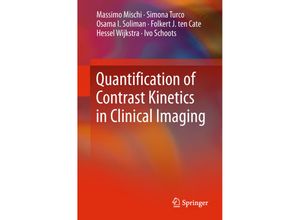This book provides a comprehensive survey of the pharmacokinetic models used for the
quantitative interpretation of contrast-enhanced imaging. It discusses all the available
imaging technologies and the problems related to the calibration of the imaging system and
accuracy of the estimated physiological parameters. Enhancing imaging modalities using contrast
agents has opened up new opportunities for going beyond morphological information and enabling
minimally invasive assessment of tissue and organ functionality down to the molecular level. In
combination with mathematical modeling of the contrast agent kinetics contrast- enhanced
imaging has the potential to provide clinically valuable additional information by estimating
quantitative physiological parameters. The book presents the broad spectrum of diagnostic
possibilities provided by quantitative contrast-enhanced imaging with a particular focus on
cardiology and oncology as well as novel developments in the area of quantitative molecular
imaging along with their potential clinical applications. Given the variety of available
techniques the choice of the appropriate imaging modality and the most suitable
pharmacokinetic model is often challenging. As such the book provides a valuable technical
guide for researchers clinical scientists and experts in the field who wish to better
understand and properly apply tracer-kinetic modeling for quantitative contrast-enhanced
imaging.

